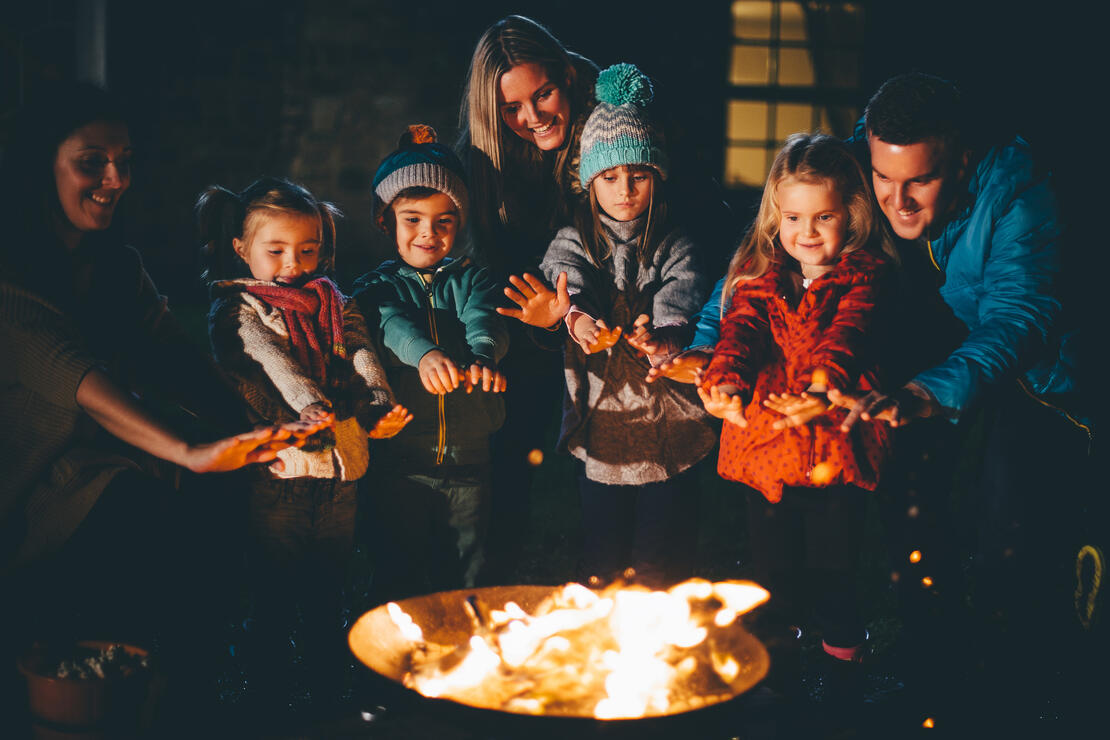Protect, Prevent, Respond: Essential Burn Safety Tips

Burns can happen in an instant. All it takes is a coffee spill, a stray panhandle or an unexpected campfire spark. Knowing what to do in these moments—and how to prevent them from happening in the first place—is key to reducing the risk of burns and their impact.
In this article, Sinai Hospital’s Trauma Program Manager Jaime Gannon, MS, RN, CEN, and Trauma Registrar Lindsey Topper share their advice.
Protect: Building a Burn-Safe Environment
Creating a burn-safe environment is the first step in protecting your family. By identifying common hazards and taking proactive steps to minimize them, you can significantly reduce the risk of burns.
In the Kitchen
- Always use the back burners on the stove and turn pot handles inward to avoid accidents.
- Use timers when cooking.
- Use oven mitts when handling hot items.
- Don’t multitask when carrying hot food.
- Keep hot liquids and other hazards out of reach of young children.
- Keep a fire extinguisher nearby.
Around the House
- Clean lint from the dryer after each use and have your dryer vent cleaned regularly.
- Never leave candles unattended.
- Remove tabletop fire pits that use alcohol as fuel from your home. Some, like Colsen fire pits, have been recalled after deaths and injuries linked to invisible “flame jetting” during refueling.
- Check for product recalls and always follow safety guidelines if using tabletop fire pits. Learn more from these resources:
Did you know?
It takes only two seconds of exposure to liquid at 148°F to cause a serious burn. Coffee, often served at 175°F, poses a significant risk—especially to children under 5, who make up 82% of hot liquid burn victims.
Prevent: Safe Practices for Every Season
Burn risks change with the seasons, but simple precautions can help you stay safe year-round.
Spring and Summer
- Grills: Check gas grills for leaks or damage before lighting and use them only in well-ventilated outdoor areas. Never leave your grill unattended—grilling causes 9,079 home fires annually in the U.S., resulting in hundreds of injuries.
- Campfires: Use designated fire pits and extinguish fires completely before leaving.
- Fireworks: Leave fireworks to the professionals. Over 10,000 injuries occur annually in the U.S. Even handheld sparklers can cause severe burns.
Fall and Winter
- Space Heaters and Fireplaces: Keep flammable objects like blankets or curtains at least three feet away from heat sources.
- Electrical Outlets: Avoid overloading outlets with heaters, holiday lights, and other electrical devices.
- Hot Water: Use proper insulation around hot water pipes and keep the water heater temperature below 120°F to prevent scalding.
Daily Awareness
Small changes, like checking the temperature of liquids before serving or placing barriers around fireplaces, can make a big difference.
Don’t forget to protect your skin from sunburn! Use sunscreen with an SPF of 15 or higher on all exposed skin, and wear hats, long sleeves and pants for additional protection during prolonged sun exposure.
Respond: Acting Quickly When Burns Occur
Even with the best precautions, accidents happen. Responding quickly can minimize damage and support healing.
Do
- Run the burn under cool water for 20 minutes to reduce pain and prevent further damage.
- Gently remove any clothing or jewelry near the burn.
- Cover the burn with a clean, dry bandage.
- Seek medical attention for large or deep burns, burns around an arm or leg, burns with blisters, chemical burns or those showing signs of infection.
- Take over-the-counter pain medications like ibuprofen or acetaminophen for pain relief.
Don’t
- Apply ice directly to the burn—it can cause further tissue damage.
- Use creams or ointments on the burn.
- Pop any blisters, as this increases the risk of infection.
- Rub the burn, which can worsen the injury.
If you’re unsure whether a burn requires professional care, it’s important to evaluate the severity and location of the injury. For large, deep, circumferential (extending around a limb, finger, or toe) burns, or chemical burns go to the emergency room immediately, as these may require specialized treatment to prevent complications. Burns on sensitive areas such as the face, hands, feet or genitals also warrant emergency care.
For less severe burns, such as minor burns affecting only the outer layer of skin or burns with small, intact blisters that are not showing signs of infection, ExpressCare Urgent Care Centers can provide prompt evaluation and treatment.
Burn Safety: A Shared Responsibility
Burns are preventable, and staying informed is one of the best ways to protect yourself and your loved ones. For more information on burn safety, visit the American Burn Association website.
Share this guide with friends and family, and always remember to have fun but be safe!